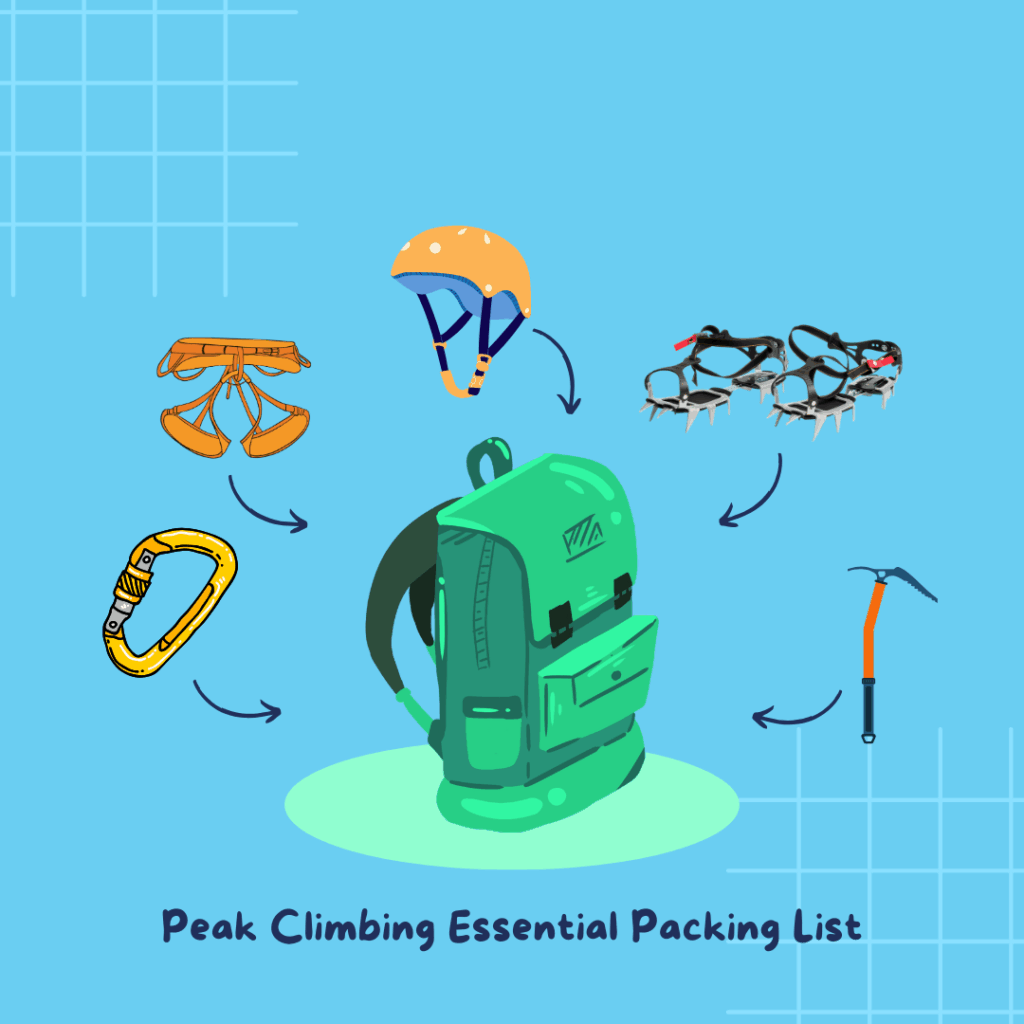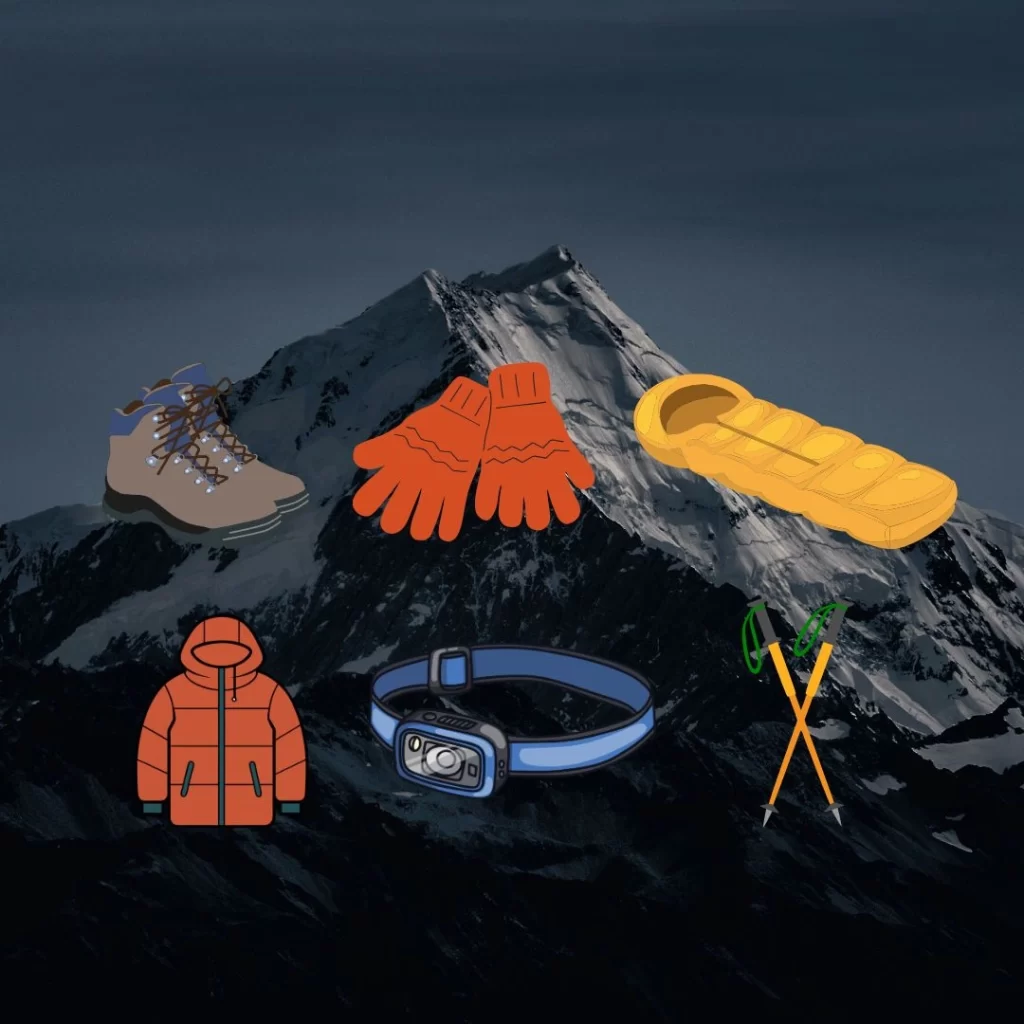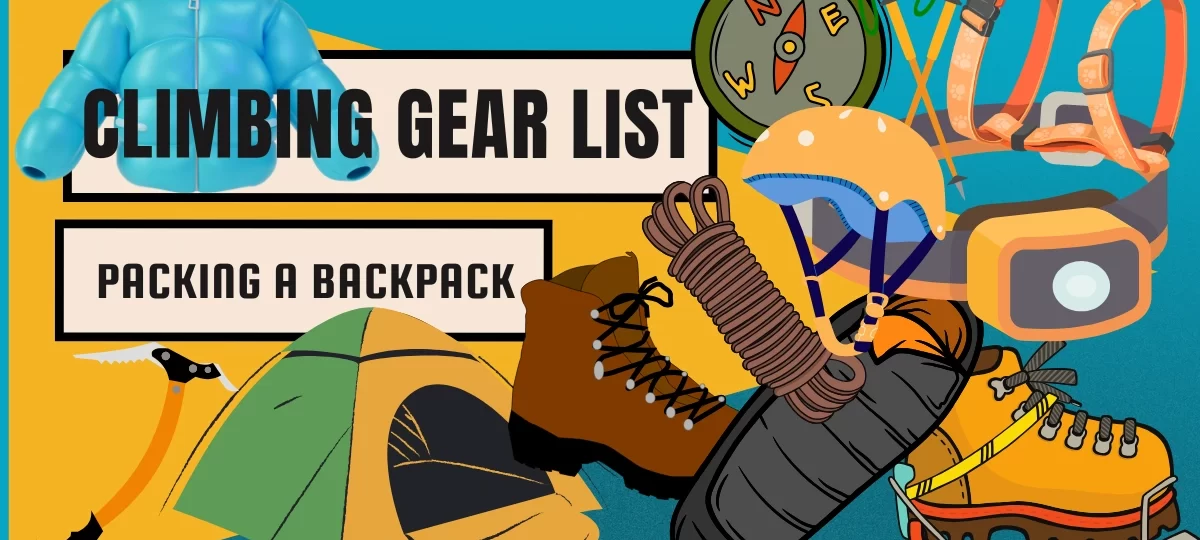Essential Gear List for Peak Climbing in Nepal
Everything You Need (and What You Don’t) for a Safe and Successful Climb in Nepal.
So, you’re planning a peak climbing adventure in Nepal? First off—awesome choice! Whether you’re aiming for Island Peak, Mera Peak, or even Lobuche East, having the right gear can literally be the difference between a successful summit and a miserable (or even dangerous) experience.
I’ve been on a few of these climbs myself, and let me tell you—overpacking can be as bad as underpacking. So let’s go through exactly what you need, why you need it, and a few things you might want to leave behind.
🏔️ Climbing Gear (The Non-Negotiables)
These are the technical essentials—you’ll need them for the glacier, fixed rope sections, and summit push.
- Climbing Harness – A standard alpine harness with adjustable leg loops.
- Helmet – For protection from falling rocks or ice.
- Crampons – Make sure they fit your boots properly; bring anti-balling plates if possible.
- Ice Axe – A straight-shaft walking axe is usually sufficient.
- Carabiners (Locking & Non-locking) – At least 2-3 locking and a few non-locking ones.
- Ascender (Jumar) – Used on fixed ropes for ascending steep sections.
- Belay/Rappel Device – ATC or similar device, depending on your route and guide system.
- Prusik Cords / Safety Sling – Backup for ascending or rappelling.
Pro Tip: If you’re climbing with a registered company, they may provide much of this gear. But double-check what’s included—don’t assume!

🥾 Footwear & Socks
Your feet will either be your best friends or worst enemies up there.
- Mountaineering Boots – Insulated double boots (like La Sportiva G2, Scarpa Phantom, or similar).
- Gaiters – To keep snow out of your boots.
- Camp Shoes / Sandals – For use in the tea house or base camp.
- Wool or Thermal Socks – At least 3–4 pairs, including one thick pair for summit night.
- Liner Socks – Optional, but great for reducing blisters.
🧤 Gloves & Handwear
Frostbite is no joke.
- Inner Gloves – Thin liner gloves for mild conditions or layering.
- Insulated Gloves – Windproof and warm.
- Summit Mittens – Thick, down or synthetic mitts for summit push.
🧥 Clothing Layers (Top to Bottom)
Think layering system—that’s the key to managing changing temps.
- Base Layer (Top & Bottom) – Moisture-wicking thermal wear (synthetic or merino wool).
- Mid-Layer (Fleece or Softshell) – Light insulation.
- Down Jacket – Go for expedition weight with a hood.
- Waterproof Shell Jacket & Pants – Breathable, durable (Gore-Tex or equivalent).
- Climbing Pants – Stretchy, breathable, and warm.
- Lightweight Trekking Pants & Shirts – For lower elevations.
- Sports Bra (for women) – Comfortable, sweat-wicking.
😷 Accessories
These are the small things that make a big difference.
- Buff / Neck Gaiter / Balaclava – Essential for wind and dust.
- Sun Hat & Wool Hat – One for warmth, one for sun.
- UV Sunglasses (Category 4) – Glacier sun is brutally bright.
- Headlamp with Extra Batteries – You’ll be using it early morning and summit night.
- Trekking Poles – Great for long approaches and descent.
🛌 Sleeping Gear
Good sleep is gold in the mountains.
- Sleeping Bag – Rated to at least -20°C (lower if you’re climbing in early spring or late autumn).
- Sleeping Bag Liner – For extra warmth and hygiene.
- Inflatable Pillow or Neck Pillow – Optional, but makes a difference.

🧳 Bags & Packs
Keep it organized and carry only what you need.
- Backpack (35–45L) – For summit day and acclimatization hikes.
- Duffel Bag (80–100L) – For gear carried by porters/yaks.
- Dry Bags / Stuff Sacks – To separate clothes and keep items dry.
- Day Pack Rain Cover – Just in case of unexpected downpours.
🍫 Food & Hydration Essentials
While food is mostly handled by the team, bring your favorites.
- Energy Bars, Gels & Snacks – High-calorie and compact.
- Water Bottles (Nalgene or metal) – Minimum 2 liters capacity.
- Insulated Bottle Cover – Prevent freezing.
- Water Purification Tablets / SteriPen – Essential for safety.
🧴 Toiletries & Personal Items
Keep it light and simple.
- Sunscreen (SPF 50+) & Lip Balm – The sun is relentless at altitude.
- Toothbrush, Toothpaste, Wet Wipes – No need for full-size items.
- Quick-Dry Towel – Small and compact.
- Personal Med Kit – Include painkillers, Diamox (if prescribed), altitude sickness meds, band-aids, etc.
- Toilet Paper – Always carry your own.
- Hand Sanitizer – Essential in the mountains.
📜 Documents & Money
- Passport & 2–3 Passport Photos – For permits.
- Climbing Permit & TIMS Card – Usually arranged by the company.
- Cash (Nepali Rupees) – No ATMs once you hit the trail.
- Travel Insurance Info – Must include high-altitude rescue.
🚫 What You Don’t Need
Sometimes, less is more.
- Too many clothes (you’ll wear the same layers over and over)
- Drone (not allowed in many trekking regions)
- Heavy books (use an e-reader or audiobook)
- Fashion gear (you’re not on a runway!)
Final Thoughts
Packing for peak climbing in Nepal isn’t just about gear—it’s about being prepared for the extremes. The weather, altitude, and terrain will test your limits. But with the right kit, you can focus less on discomfort and more on the views, the thrill, and that surreal feeling of standing on a Himalayan summit.
If you’re going through a checklist or have questions about specific brands or alternatives, just drop a comment or reach out. I’m always happy to help fellow climbers get ready for the adventure of a lifetime.
Now go pack smart—and climb high! Good luck



